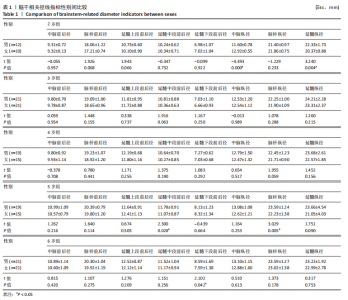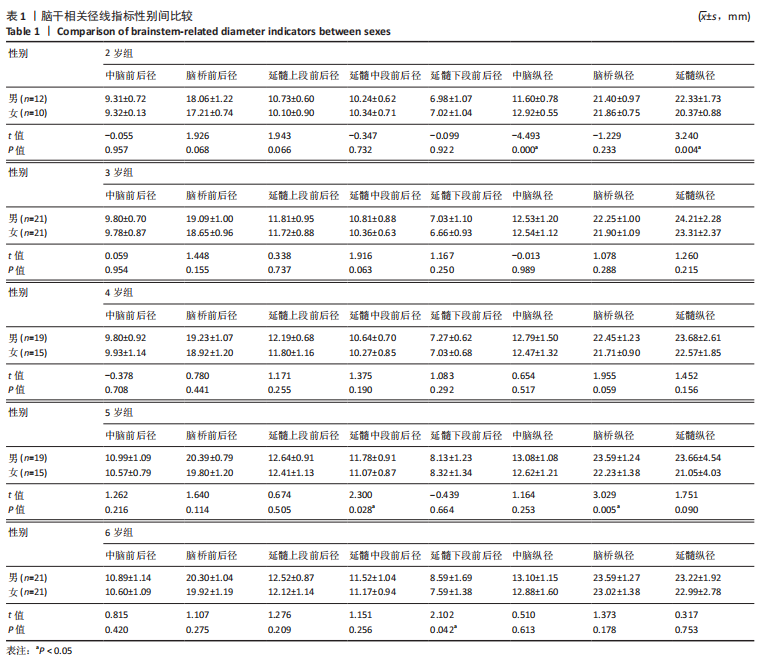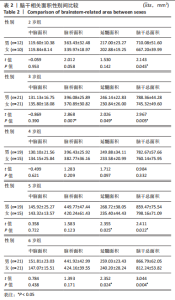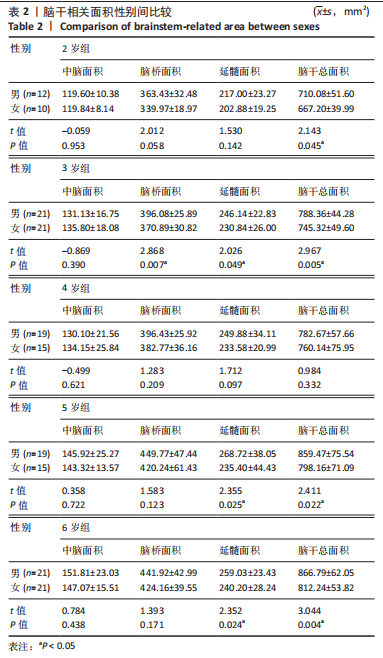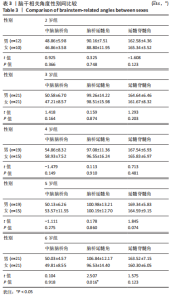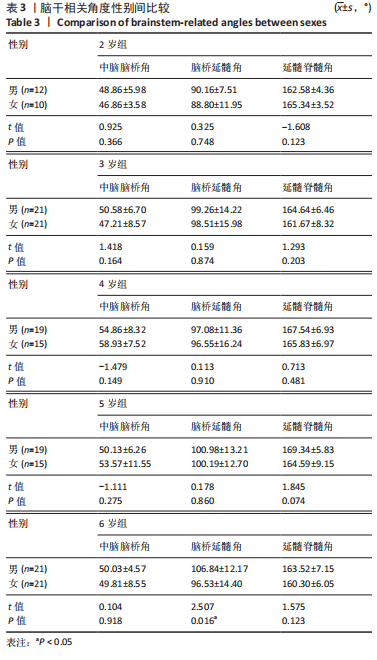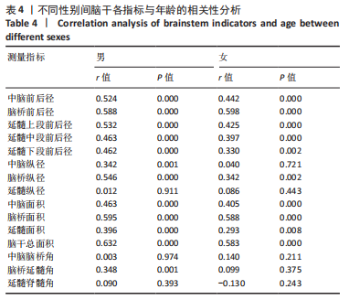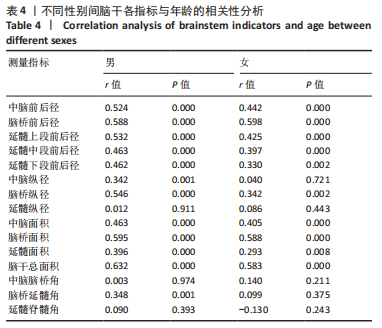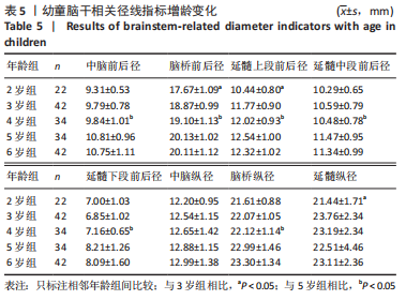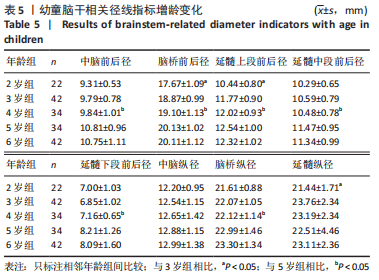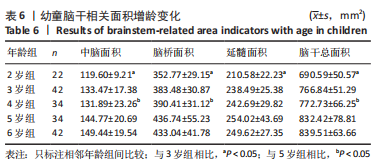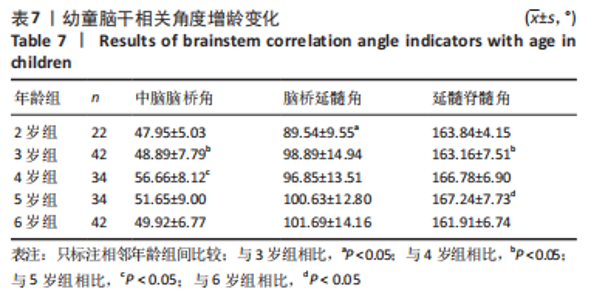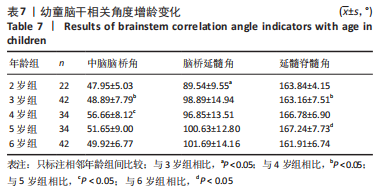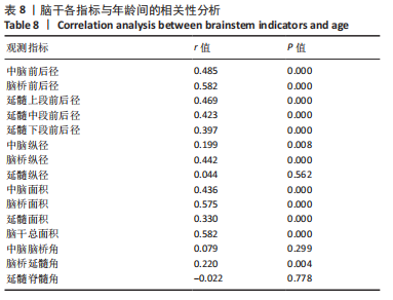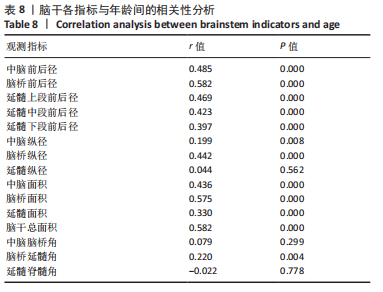[1] LEE SM, CHOI YH, YOU SK, et al. Age-Related Changes in Tissue Value Properties in Children: Simultaneous Quantification of Relaxation Times and Proton Density Using Synthetic Magnetic Resonance Imaging. Invest Radiol. 2018;53(4):236-245.
[2] 何慧融.基于Desikan-Killiany分区的儿童大脑皮层发育磁共振研究[D].蚌埠:蚌埠医学院,2022.
[3] 冯章志.基于常规MRI图像的直方图方法探究0-5岁正常儿童脑发育轨迹[D].南京:南京医科大学,2021.
[4] SADHWANI A, WYPIJ D, ROFEBERG V, et al. Fetal Brain Volume Predicts Neurodevelopment in Congenital Heart Disease. Circulation. 2022;145(15):1108-1119.
[5] LU Y, CARROLL L, KAPSE K, et al. The Impact of Fetal Congenital Heart Disease on In Vivo Regional Brainstem Development. Circulation. 2020; 142(Suppl_3):A17283.
[6] NIU X, TAYLOR A, SHINOHARA RT, et al. Multidimensional brain-age prediction reveals altered brain developmental trajectory in psychiatric disorders. Cereb Cortex. 2022;32(22):5036-5049.
[7] CALANDRELLI R, PILATO F, PANFILI M, et al. Brain structural changes in patients with cardio-facio-cutaneous syndrome: effects of BRAF gene mutation and epilepsy on brain development. A case-control study by quantitative magnetic resonance imaging. Neuroradiology. 2022;64(1):185-195.
[8] HIRASAWA-INOUE A, SATO N, SHIGEMOTO Y, et al. New MRI Findings in Fukuyama Congenital Muscular Dystrophy: Brain Stem and Venous System Anomalies. AJNR Am J Neuroradiol. 2020;41(6):1094-1098.
[9] 杨军乐,董季平,宁文德,等.正常成人脑干的MRI测量[J].实用放射学杂志,2003,19(9):781-784.
[10] 符锋,赵明亮,李晓红,等.MRI-三维重建动态测量颅脑创伤模型大鼠的空腔变化[J].中国组织工程研究,2016,20(40):5946-5952.
[11] 张英. 14-40孕周胎儿脑干发育的高场强MRI研究[D].济南:山东大学,2011.
[12] RUIZ ST, BAKKLUND RV, HÅBERG AK, et al. Normative Data for Brainstem Structures, the Midbrain-to-Pons Ratio, and the Magnetic Resonance Parkinsonism Index. AJNR Am J Neuroradiol. 2022;43(5):707-714.
[13] 韩建邦,杨庆国,张银顺.国人颈髓角的MRI影像测量及临床意义[J].山东医药,2010,50(42):14-15.
[14] 丁大连,徐先荣,李鹏,等.涉及平衡感知调控中枢神经核团的解剖与功能[J].中国耳鼻咽喉颅底外科杂志,2021,27(3):250-255.
[15] SARMA A, HECK JM, NDOLO J, et al. Magnetic resonance imaging of the brainstem in children, part 1: imaging techniques, embryology, anatomy and review of congenital conditions. Pediatr Radiol. 2021; 51(2):172-188.
[16] DOVJAK GO, SCHMIDBAUER V, BRUGGER PC, et al. Normal human brainstem development in vivo: a quantitative fetal MRI study. Ultrasound Obstet Gynecol. 2021;58(2):254-263.
[17] RAININKO R, AUTTI T, VANHANEN SL, et al. The normal brain stem from infancy to old age. A morphometric MRI study. Neuroradiology. 1994;36(5):364-368.
[18] MANGESIUS S, HUSSL A, TAGWERCHER S, et al. No effect of age, gender and total intracranial volume on brainstem MR planimetric measurements. Eur Radiol. 2020;30(5):2802-2808.
[19] METWALLY MI, BASHA MAA, ABDELHAMID GA, et al. Neuroanatomical MRI study: reference values for the measurements of brainstem, cerebellar vermis, and peduncles. Br J Radiol. 2021;94(1120):20201353.
[20] JANDEAUX C, KUCHCINSKI G, TERNYNCK C, et al. Biometry of the Cerebellar Vermis and Brain Stem in Children: MR Imaging Reference Data from Measurements in 718 Children. AJNR Am J Neuroradiol. 2019;40(11):1835-1841.
[21] POLAT SÖ, ÖKSÜZLER FY, ÖKSÜZLER M, et al. The morphometric measurement of the brain stem in Turkish healthy subjects according to age and sex. Folia Morphol (Warsz). 2020;79(1):36-45.
[22] LIANG X, JIANG H, CHEN C, et al. The correlation between magnetic resonance imaging features of the brainstem and cerebellum and clinical features of spinocerebellar ataxia 3/Machado-Joseph disease. Neurol India. 2009;57(5):578-583.
[23] 刘大华,任甫,席焕久.基于MRI的脑桥及小脑径线测量与回归分析[J].解剖学杂志,2015,38(3):311-313,322.
[24] LEE NJ, PARK IS, KOH I, et al. No volume difference of medulla oblongata between young and old Korean people. Brain Res. 2009;1276:77-82.
[25] 孙黎,陈楠,王星,等.中国正常成人中脑体积的高分辨力MRI的测量与分析[J].中国医学影像技术,2012,28(1):23-27.
[26] 任婧雅,董素贞.MRI定量评估胎儿脑体积[J].中国医学影像技术, 2020,36(8):1121-1126.
[27] MAKRIS N, SCHLERF JE, HODGE SM, et al. MRI-based surface-assisted parcellation of human cerebellar cortex: an anatomically specified method with estimate of reliability. Neuroimage. 2005;25(4):1146-1160.
[28] 何英杰,高文朋,张鸿,等.基于MRI的阿尔茨海默病患者脑干及颅脑深部核团体积变化研究[J].中华神经医学杂志,2018,17(5): 480-483.
[29] WOŹNIAK MM, ZBROJA M, MATUSZEK M, et al. Epilepsy in Pediatric Patients-Evaluation of Brain Structures’ Volume Using VolBrain Software. J Clin Med. 2022;11(16):4657.
[30] 路涛,张凤,吴成倩,等.妊娠中晚期正常胎儿颅后窝生长发育规律[J].中国医学影像技术,2022,38(7):1041-1044. |
